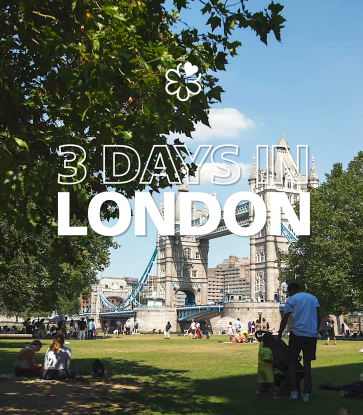Visiting a city as vast as London is an exciting proposition, but it can also be a little bit daunting. Finding your way around somewhere with so many distinct districts and a sprawling transport network can be tricky – which is why we’ve put together this guide to getting around London. How do I pay for The Tube? How do London buses work? How do I get to the city from the airport? Whatever your London transport question, we’ve got the answer.

London Underground
For many people, The London Underground is synonymous with travelling in the British capital. Referred to by locals as ‘The Tube’, it’s the London equivalent of New York’s Subway or Paris’s Métro. There are a total of 11 London Underground lines, which provide transport from the outskirts and suburbs to the bustling city centre, with many central stations serving as busy interchange hubs.In addition to the London Underground lines, there are also The London Overground, Elizabeth Line and DLR (Docklands Light Railway), which are above-ground lines and use slightly different infrastructure to their subterranean counterparts. However, they are used in much the same way as The Tube and form part of the London Underground map you’ll see on the wall of most platforms and inside the trains themselves.
When it comes to paying for The Tube, the simplest way is to ‘tap in’ and ‘tap out’ at your start and end stations. Simply touch your contactless card or smartphone at the ticket barriers, and your fare will be automatically calculated. If you’re using one of the few stations that don’t have ticket barriers, make sure you find a tap in/out point so that the correct fare for your journey is calculated – otherwise you may end up being overcharged. A standard adult off-peak fare within Zone 1 (city centre) is £2.70.

You can also tap using an Oyster card. This is a pre-payment card that you can buy from almost all Tube stations, and can be topped up during your trip either at physical Oyster machines or using the Oyster app. The card itself requires an initial deposit, but is returnable and refundable at the end of your stay. You may also want to look into Transport For London’s various travelcards, which offer unlimited travel for a set length of time – but they rarely work out much cheaper than just using the ‘pay as you go’ options.
When planning a Tube journey, try to make the most of cheaper off-peak prices and avoid rush hour if you can, or your train might resemble a tin of sardines. And don’t forget the number one rule of Tube etiquette: when you’re on an escalator, stand on the right and walk on the left – otherwise you might be met with disapproving glances.
If you’re still curious about The Tube, check out our guides to each line and its restaurants: Bakerloo, Central, Circle, District, Hammersmith & City, Jubilee, Metropolitan, Northern, Piccadilly, Victoria, Elizabeth and London Overground.
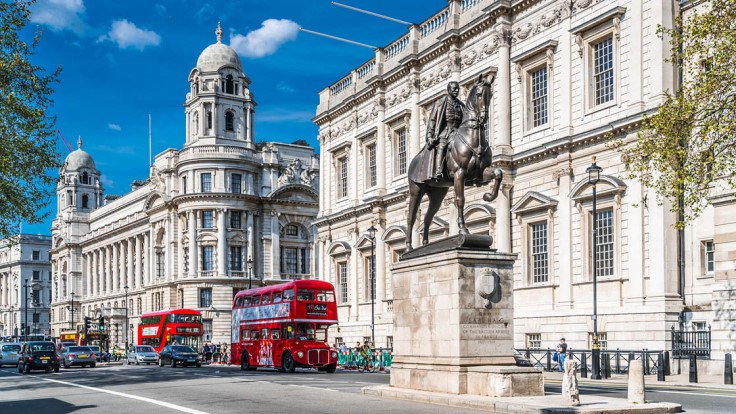
Bus
Despite being immensely popular, The Tube isn’t the only easy way to get around London. Taking one of the iconic red London buses is also a great option. It’s main advantage over The Tube is that you can see some sights during your journey and enjoy a bit of natural light rather than burrowing yourself underground. The main drawback is that traffic can make journey times less predictable.Paying for a London bus is very similar to The Tube – in that you can use your contactless card, smartphone or Oyster card – but the main difference is that you do not need to tap out. All bus journeys have the same fare, so there’s no need for the system to know where you got off. Just tap in when you board and you’re sorted! The bus is particularly good value too, with the ‘Hopper’ fare meaning you can take unlimited bus journeys within an hour of first tapping in for £1.75. The daily cap on buses is £5.25, so you’ll never pay more than that for a day of exploring. It’s important to remember, however, that London buses no longer take cash.
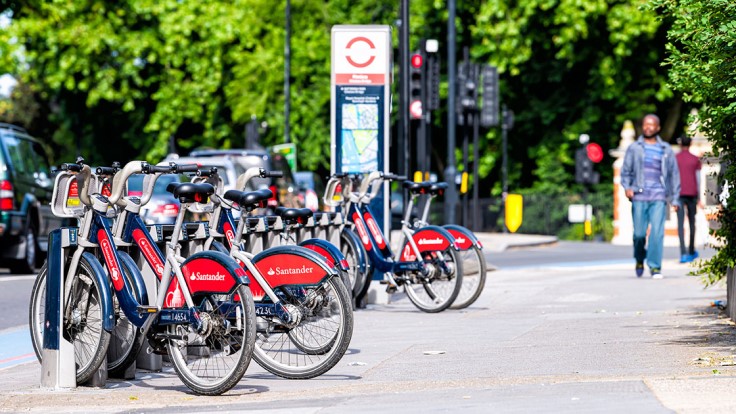
Cycling
If you want to travel around London while keeping both yourself and the planet healthy, then using one of the city’s many bike rental schemes is an excellent idea. The official Transport For London option is Santander Cycles. Rides cost £2 per 30 minutes and the bikes can be found at various docking stations across the city, predominantly located in central London. There are several other companies offering similar services, including the very popular Lime bikes. While these are more expensive, they do have the advantage of being e-bikes, with electric assistance allowing you to travel more quickly and with less exertion.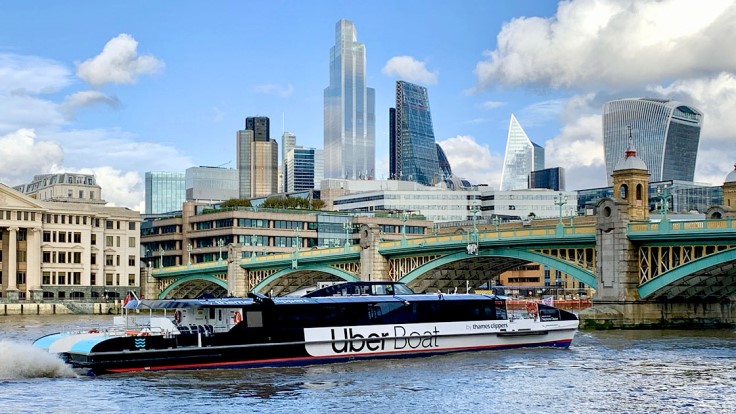
Boat
The most fun of all London transport options, taking a River Bus along the Thames may not be the most time or cost efficient way to get around, but it certainly makes the journey itself more of an event. There are several routes available – operated by Uber Boat by Thames Clippers – stretching from Putney in the west to Greenwich and Canary Wharf in the east. Along the way, look out for sights like Big Ben and Tower Bridge.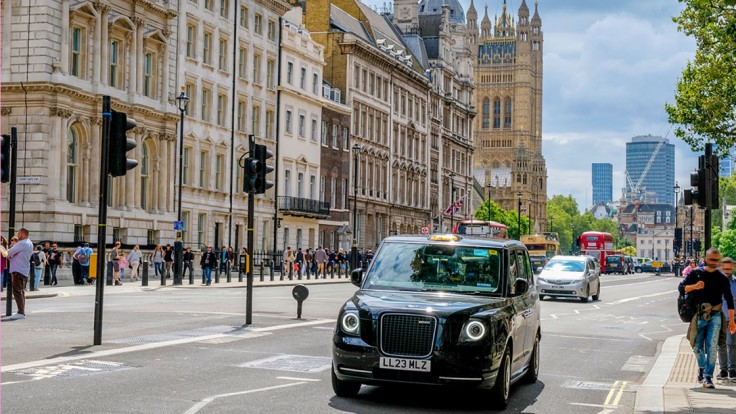
Taxis
Uber and similar app-based taxi firms do operate here in London, but it’s worth taking a ride in one of the city’s famous Black Cabs. These drivers have passed ‘The Knowledge’, a test which proves that they know all of London’s street names and shortest routes – so there’s no need for them to rely on GPS.
Walking
Of course, if where you need to be is close enough, walking is always a good idea. London is a beautiful city with so much to admire, and walking its streets is the best way to do so. The distance between central London Tube stations is often under 10 minutes, so it’s worth stretching your legs instead of heading down yet another escalator.Getting To and From the Airport
Now we’ve covered the main methods of travelling around London, it’s worth giving a quick piece of advice on getting here in the first place. If you’re coming from within the UK, train is the most climate-friendly option, and if you’re travelling from Paris, Brussels, Amsterdam or some other European cities, then the Eurostar will take you straight to St Pancras International station, in the heart of London.If you’re flying to the UK, however, you’ll likely find yourself arriving at an airport quite far from London itself. Don’t worry though, there’s an easy way in from each of London’s main airports.
From Gatwick, the quickest option is to take a train that lasts roughly 35 minutes. Trains from Gatwick arrive at either London Bridge, Victoria or Blackfriars.
From Heathrow, the relatively new Elizabeth Line goes all the way from the airport to the city centre, and even beyond here out to Essex. A faster but more expensive service is the Heathrow Express, which takes you to Paddington in just 20 minutes.
From Stansted, the train is again the quickest option. The Stansted Express runs every 15 minutes and gets you to London Liverpool Street in just under 50 minutes. As with all the London airports, you can also get a coach, which is a cheaper but longer option than the train.
From Luton, the trains are again regular (every 10 minutes at peak times) and take you to multiple London stations, including St Pancras International, Farringdon and London Bridge.
Hero Image: Covent Garden Tube station (© krblokhin/iStock)




